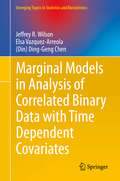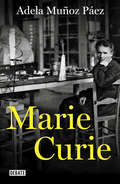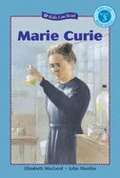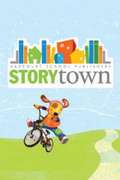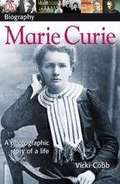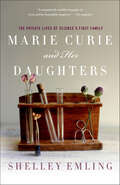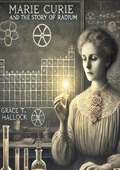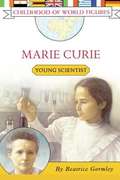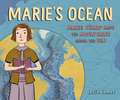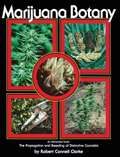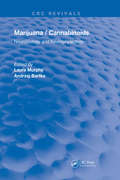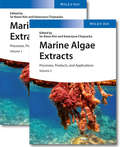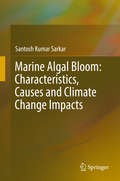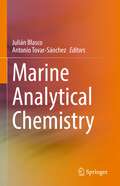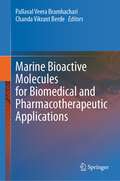- Table View
- List View
Marginal Models in Analysis of Correlated Binary Data with Time Dependent Covariates (Emerging Topics in Statistics and Biostatistics)
by Jeffrey R. Wilson (Din) Ding-Geng Chen Elsa Vazquez-ArreolaThis monograph provides a concise point of research topics and reference for modeling correlated response data with time-dependent covariates, and longitudinal data for the analysis of population-averaged models, highlighting methods by a variety of pioneering scholars. While the models presented in the volume are applied to health and health-related data, they can be used to analyze any kind of data that contain covariates that change over time. The included data are analyzed with the use of both R and SAS, and the data and computing programs are provided to readers so that they can replicate and implement covered methods. It is an excellent resource for scholars of both computational and methodological statistics and biostatistics, particularly in the applied areas of health.
Marginality: Addressing the Nexus of Poverty, Exclusion and Ecology
by Joachim Von Braun Franz GatzweilerThis book takes a new approach on understanding causes of extreme poverty and promising actions to address it. Its focus is on marginality being a root cause of poverty and deprivation. "Marginality" is the position of people on the edge, preventing their access to resources, freedom of choices, and the development of capabilities. The book is research based with original empirical analyses at local, national, and local scales; book contributors are leaders in their fields and have backgrounds in different disciplines. An important message of the book is that economic and ecological approaches and institutional innovations need to be integrated to overcome marginality. The book will be a valuable source for development scholars and students, actors that design public policies, and for social innovators in the private sector and non-governmental organizations.
Marginalized Reproduction: Ethnicity, Infertility and Reproductive Technologies (The Earthscan Science in Society Series)
by Lorraine Culley Nicky Hudson Floor Van RooijWorldwide, over 75 million people are involuntarily childless, a devastating experience for many with significant consequences for the social and psychological well-being of women in particular. Despite greater levels of infertility and strong cultural meanings attached to having children, little attention has been paid politically or academically to the needs of minority ethnic women and men. This groundbreaking volume is the first to highlight the ways in which diverse ethnic, cultural and religious identities impact upon understandings of technological solutions for infertility and associated treatment experiences within Western societies. It offers a corrective to the dominance of the narratives of hegemonic groups in infertility research. The collection begins with a discussion of fertility prevalence and access to treatment for minorities in the West and considers some of the key methodological challenges for social research on ethnicity and infertility. Drawing on primary research from the US, the UK, Eire, Germany, the Netherlands and Australia, the book then turns the spotlight onto the ways in which minority status and cultural and religious mores might impact on the experience of infertility and assisted reproductive technologies. It argues that more equitable access to culturally competent assisted conception services should be an essential component of a transformatory politics of infertility.
Marie Curie
by Adela Muñoz PáezLa historia oculta de Marie Curie, la madre de la física moderna. Todos creemos saber quién fue Marie Sklodowska. También conocida como Marie Curie, fue la primera mujer en recibir un premio Nobel y la primera mujer científica en ser reconocida universalmente: su descubrimiento de la radioactividad fue el inicio de una brillante carrera que culminó con la incorporación de dos nuevos elementos a la tabla periódica. Trabajadora incansable, Marie Curie vivió aparentemente ajena a las limitaciones impuestas a las mujeres de su tiempo. La realidad, sin embargo, es que fue denostada y agredida: la tildaron de impostora, de judía inmigrante, de adúltera, de aprovechada... Esta apasionante biografía nos hará descubrir con nuevos ojos la vida de una científica extraordinaria que, todavía hoy, sigue suscitando una inmensa fascinación.
Marie Curie
by Elizabeth MacleodMeet Marie Curie -- Nobel laureate and world famous scientist. Marie was the first woman to win the world's top science prize -- and the first person to win it twice.
Marie Curie
by Kathleen KrullMarie Curie, the woman who coined the term radioactivity, won not just one Nobel Prize but two?in physics and chemistry, both supposedly girl-phobic sciences. .
Marie Curie
by Vicki CobbThe book introduces young readers to two of the world's most remarkable women: scientist Marie Curie and humanitarian Mother Teresa.
Marie Curie and Her Daughters: The Private Lives of Science's First Family
by Shelley EmlingPublished to widespread acclaim, in Marie Curie and Her Daughters, science writer Shelley Emling shows that far from a shy introvert toiling away in her laboratory, the famed scientist and two-time Nobel prize winner was nothing short of an iconoclast. Emling draws on personal letters released by Curie's only granddaughter to show how Marie influenced her daughters yet let them blaze their own paths: Irene followed her mother's footsteps into science and was instrumental in the discovery of nuclear fission; Eve traveled the world as a foreign correspondent and then moved on to humanitarian missions. Emling also shows how Curie, following World War I, turned to America for help. Few people know about Curie's close friendship with American journalist Missy Meloney, who arranged speaking tours across the country for Marie, Eve, and Irene. Months on the road, charming audiences both large and small, endeared the Curies to American women and established a lifelong relationship with the United States that formed one of the strongest connections of Marie's life.Factually rich, personal, and original, this is an engrossing story about the most famous woman in science that rips the cover off the myth and reveals the real person, friend, and mother behind it.
Marie Curie and Radium
by Steven ParkerThe life of Marie Curie, her two Nobel prizes for her work on radiation and the discovery of the element Radium. The effects of radiation on her health and the many applications in the medical field as well as warfare. Also includes a historical timeline which corelates the events of Curie's life with those of the world. An excellent book for a book report.
Marie Curie and the Story of Radium
by Grace T. HallockDiscover the inspiring life and groundbreaking achievements of one of history's most remarkable scientists with Grace T. Hallock's Marie Curie and the Story of Radium. This captivating short biography brings to life the story of Marie Curie, a pioneering physicist and chemist whose discovery of radium revolutionized the scientific world and changed the course of medical research.Grace T. Hallock chronicles Marie Curie's journey from her humble beginnings in Poland to her monumental scientific achievements in France. Through vivid storytelling Hallock highlights Curie's relentless dedication, intellectual brilliance, and unwavering perseverance in the face of numerous challenges.Marie Curie and the Story of Radium delves into Curie's groundbreaking work on radioactivity, which earned her two Nobel Prizes in Physics and Chemistry—making her the first person to ever achieve such a feat. Hallock explores the significance of Curie's discoveries and their profound impact on science and medicine, including the development of cancer treatments and advancements in nuclear physics.The short book also provides a glimpse into Curie's personal life, including her partnership with her husband, Pierre Curie, and her role as a mother. Hallock portrays Curie as a multifaceted individual, balancing her scientific pursuits with her responsibilities and navigating the complexities of a male-dominated field.Join Grace T. Hallock in celebrating the life of Marie Curie and uncover the fascinating story behind one of the most significant scientific discoveries of the modern era. Marie Curie and the Story of Radium is a timeless account of curiosity, courage, and the pursuit of knowledge.
Marie Curie for Kids: Her Life and Scientific Discoveries, with 21 Activities and Experiments
by Amy O'QuinnMarie Curie, renowned for her work on radioactivity, was the first woman to win a Nobel Prize, the first person to win in two fields (chemistry and physics), and the first woman to hold a chair position at the Sorbonne. Marie Curie for Kids details Curie's remarkable life, from her childhood under a repressive czar in Poland to her tireless work supporting herself through college to meeting her ideal match in scientist Pierre Curie to her revolutionary research. Kids learn how Curie quietly flouted societal norms, working in full partnership with her husband while also teaching and raising two daughters. Scientific concepts are presented in a clear, accessible way, and a range of activities--from making Polish pierogies to exploring magnetism to using electrolysis to split water--allow for exploration of Curie's life, times, and work.
Marie Curie: Young Scientist (Childhood of World Figures Series)
by Beatrice GormleyMarie Curie was a world-renowned scientist who made many important discoveries, as well as a great teacher and a mother, but her accomplishments didn't come easily. Born Maria Sklodovska in 1867, Marie grew up in Russia-occupied Poland where schools were not allowed to teach Polish history or language, and lab experiments were forbidden in science classes. When Marie was young,her mother and eldest sister both passed away. Marie was determined not to let hardships get in the way of her dreams. She went on to win two Nobel Prizes, one each in physics and chemistry, making her the first woman to win the award and first person ever honored with two of them. Read all about the clever young girl whose hard work lead to brilliant contributions in the field of science.
Marie's Ocean: Marie Tharp Maps the Mountains Under the Sea
by Josie JamesA National Science Teaching Association Best STEM Book of 2021A NCSS Notable Social Studies Trade Book for Young Readers Honor SelectionA Junior Library Guild SelectionA mixed-format picture book biography of Marie Tharp, the remarkable woman who mapped the ocean floor. Marie Tharp earned a graduate degree in geology in the 1940s, at a time when scientific careers were largely unavailable to women. Marie’s vision and tenacity paved the way for her to become one of the greatest oceanographic cartographers of the 20th century. She was the first person to map the ocean floor and discover the 40,000 mile long Mid-Ocean Ridge and Rift Valley. Her astounding discovery supported the theory of continental drift, which led to the theory of plate tectonics. But it was not an easy road, and Marie struggled to receive the credit she deserved for her discovery.From Marie Tharp’s early childhood dreams all the way to her defining achievement, Josie James's Marie's Ocean is the story of one of earth science’s greatest hidden figures. Christy Ottaviano Books
Marie-Antoinette’s Legacy: The Politics of French Garden Patronage and Picturesque Design, 1775-1867 (Spatial Imageries in Historical Perspective)
by Susan Taylor-LeducChallenging the established historiography that frames the French picturesque garden movement as an international style, this book contends that the French picturesque gardens from 1775 until 1867 functioned as liminal zones at the epicenter of court patronage systems. Four French consorts—queen Marie-Antoinette and empresses Joséphine Bonaparte, Marie-Louise and Eugénie—constructed their gardens betwixt and between court ritual and personal agency, where they transgressed sociopolitical boundaries in order to perform gender and identity politics. Each patron endorsed embodied strolling, promoting an awareness of the sentient body in artfully contrived sensoria at the Petit Trianon and Malmaison, transforming these places into spaces of shared affectivity. The gardens became living legacies, where female agency, excluded from the garden history canon, created a forum for spatial politics. Beyond the garden gates, the spatial experience of the picturesque influenced the development of cultural fields dedicated to performances of subjectivity, including landscape design, cultural geography and the origination of landscape aesthetics in France.
Marijuana Botany
by Robert Connell ClarkeMarijuana Botany presents the scientific knowledge and propagation techniques used to preserve and multiply vanishing Cannabis strains. Also included is information concerning Cannabis genetics and breeding used to begin plant improvement programs. The book presents scientific and horticultural principles, along with their practical applications, necessary for the breeding and propagation of Cannabis and in particular, marijuana. It will appeal not only to the professional researcher, but to the marijuana enthusiast or anyone with an eye to the future of Cannabis products.
Marijuana/Cannabinoids: Neurophysiology and Neurobiology (Routledge Revivals)
by Laura Murphy Andrzej BartkeFirst Published in 1992, Marijuana/Cannabinoids: Neurophysiology and Neurobiology is the first book to specifically address the effects of marijuana and cannabinoids on the physiology and behavior of the brain. The book discusses the dramatic effects of marijuana use on brain chemistry, pharmacology, and behavior. It also examines the isolation of natural cannabinoids and the synthesis of new cannabinoid-like compounds that have been important in research leading to the discovery and function of the cannabinoid receptor in the brain. Up-to-date research findings and in-depth reviews on marijuana and cannabinoids in the brain and their potential therapeutic value make Marijuana/Cannabinoids: Neurophysiology and Neurobiology essential for students, practitioners, and researchers involved in researching drugs of abuse.
Marin Mersenne and the Study of Harmony: From Sound to Music (Scientiae Studies)
by Leendert MiesenMarin Mersenne and the Study of Harmony delves into the central role of music among the early modern sciences by focusing on the work of the French polymath Marin Mersenne (1588–1648). Although now regarded more as an art than a science, music was for many early modern scholars a universal science for studying the harmonies present in all beings. For Mersenne, music’s ability to be quantified while being experienced aesthetically meant that it was the central science to approximate the sounding and inaudible harmonies present in the world and universe at large. Bringing together Mersenne’s interests in the physics of sound and hearing, musical composition, instruments, curiosities, and music from outside Europe, this book shows why so many scholars were drawn to music and how music was at the center of the early modern debate on the foundations of knowledge.
Marine Algae Extracts
by Se-Kwon Kim Katarzyna ChojnackaDesigned as the primary reference for the biotechnological use of macroalgae, this comprehensive handbook covers the entire value chain from the cultivation of algal biomass to harvesting and processing it, to product extraction and formulation. In addition to covering a wide range of product classes, from polysaccharides to terpenes and from enyzmes to biofuels, it systematically discusses current and future applications of algae-derived products in pharmacology, medicine, cosmetics, food and agriculture. In doing so, it brings together the expertise of marine researchers, biotechnologists and process engineers for a one-stop resource on the biotechnology of marine macroalgae. Benefit from the introductory offer, valid until 30 April 2015! Introductory price: £245.00.00 / $405.00 / 299.00 List price thereafter: £285.00 / $470.00 / 349.00
Marine Algal Bloom: Characteristics, Causes and Climate Change Impacts
by Santosh Kumar SarkarIn the marine environment, single-celled, microscopic, plant-like organisms naturally occur in the well-lit surface layer of any body of water. These organisms, referred to as phytoplankton or microalgae, form the base of the food web upon which nearly all other marine organisms depend. Algal bloom is a rapid increase in or accumulation of the population of about 300 species of algae due to excess nutrients (eutrophication), and is of major global interest as it causes reduction in species diversity, abrupt changes in water quality, and discoloration of the water (green, yellow, brown or red) depending on the species of algae and the type of pigments they contain. Dying blooms can also be an environmental concern as when the cells sink and decay, bacteria break down the organic material, which in turn strips oxygen from the water. This microbial oxygen demand at times leads to very low oxygen levels in the bottom waters, harming aquatic life. Documentation of this sporadic high abundance of algae, together with the significant species richness of the diatoms, requires comprehensive studies in the Sundarban coastal environment, which is facing severe degradation due to natural & anthropogenic stressors. In addition, a better understanding of the effects of algal blooms on seafood quality, the complex biological, chemical and physical interactions and subsequent effects on trophodynamics is needed to develop strategies for effective coastal zone management. The book discusses the occurrence of harmful algal blooms (HABs) caused by the dinoflagellates of the genus Alexandrium and Karenia, or diatoms of the genus Pseudo-nitzschia, which have large and varied impacts on marine ecosystems (such as large-scale marine mortality events that have been associated with various types of shellfish poisonings) depending on the species involved, the environment where they are found, and the mechanism by which they exert negative effects. HABs represent a major environmental problem in all regions of the U.S., and their occurrence is on the rise due to increased nutrient pollution. HABs have severe impacts on human health, aquatic ecosystems, and the economy. Such blooms, known colloquially as red tides due to their red or brown hues, are increasing in frequency and magnitude worldwide as a result of changes in oceanic climate, increased coastal eutrophication and enhanced long-distance dispersal in ballast water. As such, the book offers an in-depth account of the complex biological, chemical and physical interactions of the algal blooms (both innocuous and harmful ones). It also discusses the highly topical issue of the impact of global climate change on the frequency and severity of HABs in the context of alterations in temperature, stratification, light and ocean acidification.Focusing on both basic and applied limnology, this book is a reliable and up-to-date reference resource for students, teachers and researchers engaged in the field of coastal research/management at regional and global scales.
Marine Analytical Chemistry
by Julián Blasco Antonio Tovar-SánchezThis textbook offers a comprehensive and authoritative introduction to the latest analytical methods, tools and techniques used in the marine environment, bringing together the two fields of chemical oceanography and analytical chemistry. Divided into 11 chapters, the book starts with an overview of the main parameters of the marine carbon system, and it covers different sampling strategies used by the marine scientific community, and the different chemical analyses to measure trace metals, radionuclides and organic matter in the marine environment. Particular attention is given to the identification and quantification of marine persistent organic pollutants, emerging organic contaminants and microplastics. Readers will also find accessible explanations and real life examples of the application of remote sensing and in-situ sensing technologies to monitor the marine environment. The textbook finishes with a chapter on data treatment that outlines the relevant statistical approaches, uncertainty estimation and quality assurance of marine chemical measurements. This textbook provides both students and professionals alike with a transdisciplinary and comprehensive foundation for the chemical analysis of our oceans and seas.
Marine Animal Forests
by Sergio Rossi Lorenzo Bramanti Andrea Gori Covadonga OrejasDuring the last decades there has been an increasing evidence of drastic changes in marine ecosystems due to human-induced impacts, especially on benthic ecosystems. The so called "animal forests" are currently showing a dramatic loss of biomass and biodiversity all over the world. These communities are dominated by sessile suspension feeder organisms (such as sponges, corals, gorgonians, bivalves, etc. ) that generate three-dimensional structures, similar to the trees in the terrestrial forest. The animal forest provide several ecosystem services such as food, protection and nursery to the associated fauna, playing an important role in the local hydrodynamic and biogeochemical cycles near the sea floor and acting also as carbon sinks. The present book focus its attention on these three dimensional animal structures including, for the first time, all the different types of animal forests of the world in a single volume.
Marine Anthropogenic Litter
by Melanie Bergmann Lars Gutow Michael KlagesThis book describes how man-made litter, primarily plastic, has spread into the remotest parts of the oceans and covers all aspects of this pollution problem from the impacts on wildlife and human health to socio-economic and political issues. Marine litter is a prime threat to marine wildlife, habitats and food webs worldwide. The book illustrates how advanced technologies from deep-sea research, microbiology and mathematic modelling as well as classic beach litter counts by volunteers contributed to the broad awareness of marine litter as a problem of global significance. The authors summarise more than five decades of marine litter research, which receives growing attention after the recent discovery of great oceanic garbage patches and the ubiquity of microscopic plastic particles in marine organisms and habitats. In 16 chapters, authors from all over the world have created a universal view on the diverse field of marine litter pollution, the biological impacts, dedicated research activities, and the various national and international legislative efforts to combat this environmental problem. They recommend future research directions necessary for a comprehensive understanding of this environmental issue and the development of efficient management strategies. This book addresses scientists, and it provides a solid knowledge base for policy makers, NGOs, and the broader public.
Marine Bioactive Compounds
by Maria HayesThe aim and scope of this book is to highlight the sources, isolation, characterization and applications of bioactive compounds from the marine environment and to discuss how marine bioactive compounds represent a major market application in food and other industries. It discusses sustainable marine resources of macroalgal origin and gives examples of bioactive compounds isolated from these and other resources, including marine by-product and fisheries waste streams. In addition, it looks at the importance of correct taxonomic characterization.
Marine Bioactive Molecules for Biomedical and Pharmacotherapeutic Applications
by Pallaval Veera Bramhachari Chanda Vikrant BerdeThis book explores cutting-edge research on the discovery and application of marine bioactive molecules for biomedical and pharmacotherapeutic purposes. The book begins by delving into the bioprospection of marine sponge microbiomes for bioactive metabolites using advanced metagenomics tools. It then explores metagenome mining approaches for the discovery of marine microbial natural products. The use of marine-derived fungi as a source of anticancer secondary metabolites is also discussed. The book then turns to the biomedical applications of marine-derived biomaterials, including marine biopolymers in tissue engineering and regenerative medicine. Marine-derived pharmaceuticals and polymeric nanostructures for cancer treatment are also examined. Next, the book looks at the use of marine microbial sources for the synthesis of metallic nanomaterials, prospects, current development, and challenges in nanomedicine. The book continues by exploring the treasure trove of natural polymers for tissue engineering in the marine environment. It also discusses the immunomodulatory and therapeutic potential of marine-derived astaxanthin, current developments, and prospects. Finally, the book concludes by exploring the recent progress in marine-derived nutraceuticals and marine phytoplankton bioactive compounds and their applications in medicine.
